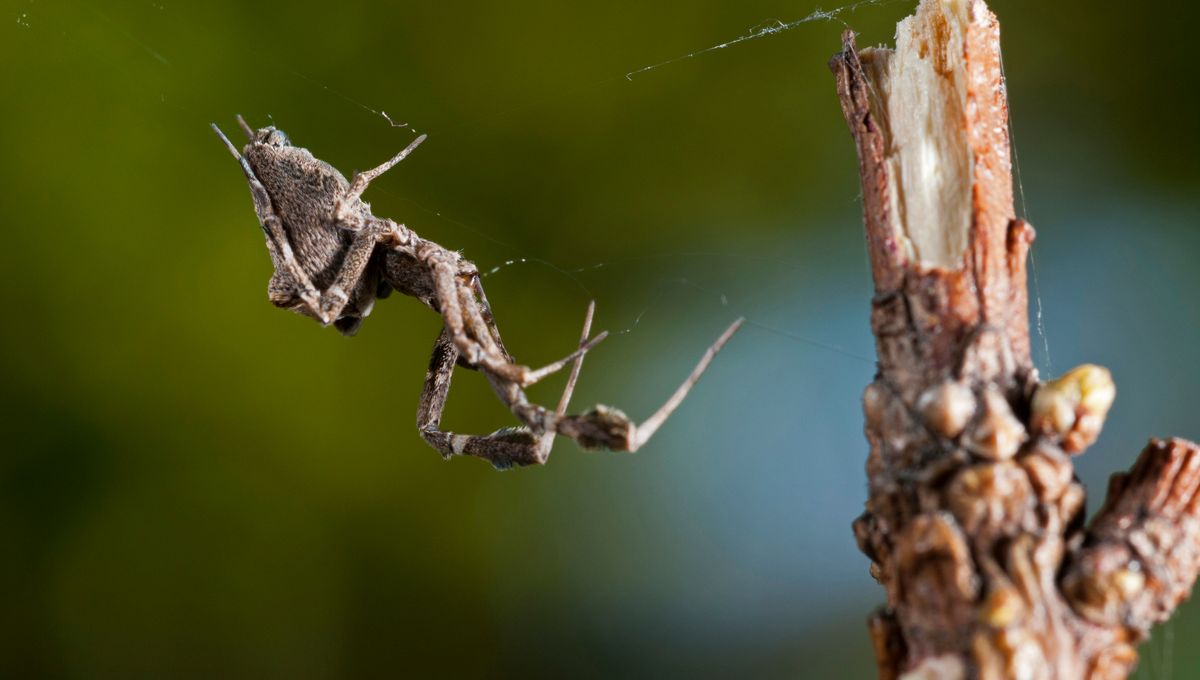
Few things can make you go “ewww” like the phrase “regurgitation of digestive fluids” but that’s exactly how one spider species goes about tackling its prey.
The rest of this article is behind a paywall. Please sign in or subscribe to access the full content.
Forget fancy injections of venom, the best way for a feather-legged lace weaver (Uloborus plumipes) to eat its meal is simply to throw up all over it.
Uloboridae spiders to which the feather-legged lace weaver belongs, are famous for wrapping their prey in silk, sometimes hundreds of meters worth, and then adding their own special soup of digestive fluids all over the silk-wrapped prey package. However this is unusual in the spider world as most species use venom found in their mouthparts rather than toxic tummy juice.
“It really looks like there’s something in these digestive fluids that kill the prey,” Giulia Zancolli paper author from the University of Lausanne in Switzerland, told Live Science.
The team found that the lace weaver lacks venom apparatus in the mouthparts, however had evolved to produce toxins within the gut instead. By looking closer at the spiders the researchers discovered that the spiders lack venom glands and a venom duct opening in the fangs suggesting that during the evolution of these spiders this functionality was lost.
However, analysis revealed that venom-like substances are still present and are secreted by the midgut which is also responsible for digestive fluids. This is not a scenario only limited to spiders of Uloboridae, the Brazilian white-knee tarantula (Acanthoscurria geniculate) also possesses similar proteins, however this tarantula is strong and can kill a prey item simply by biting it, which might explain why fewer toxins are found in their digestive fluids.
“We propose that Uloboridae spiders have not evolved novel toxic secretions but rather altered how existing secretions are deployed,” wrote the study authors.
“Unlike typical spiders, which regurgitate digestive fluids only near their own mouthparts after venom injection, uloborids exhibit a unique feeding behaviour. They wrap their prey extensively in silk and cover the entire silk package with digestive fluids. It is only after the application of digestive fluids that prey death occurs. We can think of this external application of toxin secretion as mimicking the internal diffusion of venom.”
The team think that toxins for prey capture and digestion are not confined to one area and instead might have evolved as digestive juices before being made into venom in the mouthparts over the course of evolutionary history for these species.
Most of the time, these midgut toxins are a secondary backup to prey death but in the Uloboridae they are the primary strategy and are dispersed across a silk-wrapped prey package before ingestion.
The paper is published in BMC Biology.
Source Link: Want To Kill Your Prey? Do It Feather-Legged Lace Weaver Spider Style And Vomit All Over Them